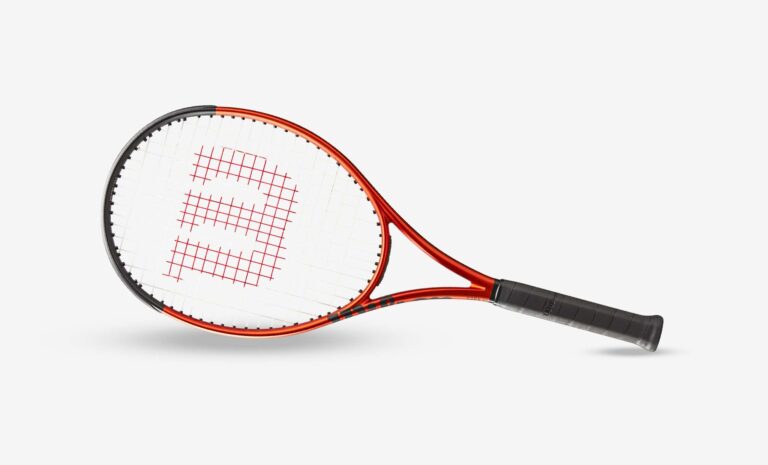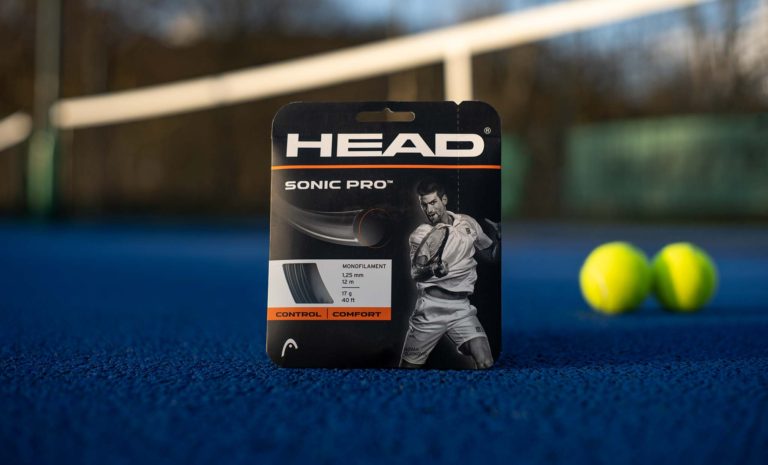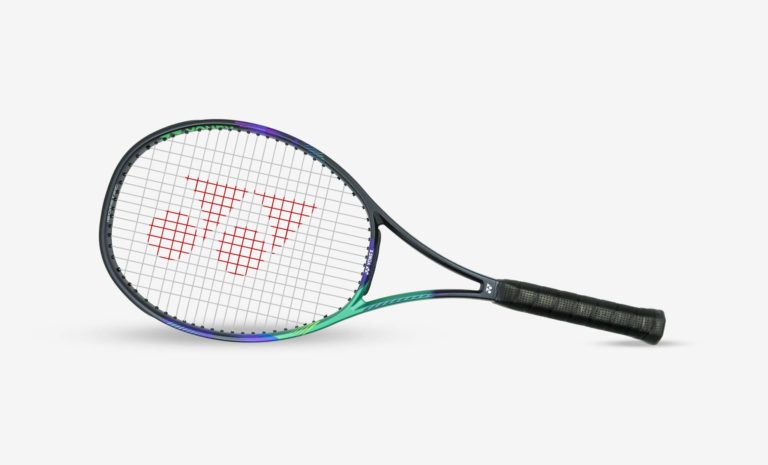In an effort to do a way with all the plastic and metal tennis ball cans, Wilson have developed the perfect eco-friendly tennis ball in their new Wilson Triniti. The quest is: is it really a suitable alternative to regular pressurised tennis balls? Find out as we put it to the test in this Wilson Triniti tennis ball review.
We may earn an affiliate commission from links on this page. Tennis Creative does not accept money for editorial gear reviews, so we only recommend products we love!
Wilson Triniti Tennis Ball Specifications
| Ball Type | Pressureless |
| Court Type | All Court |
| Player Level | All Levels |
| ITF Classification | Approved, Type 2 Medium Speed |
| Other Features | Environmentally Friendly |
Wilson Triniti - The Eco-friendly Tennis Ball
The Wilson Triniti is a revolutionary product on the tennis market. It’s the first “eco-friendly” tennis ball
Every year, roughly 400 million tennis balls and 125 million tennis cans end up in ladfills around the world, which is a pretty crazy amount of waste. So, on their mission to make tennis a greener sport, Wilson set out on a project to develop a tennis ball that could perform the same as a regular tennis ball, without the need of all the plastic and metal packaging that comes with it.
The result is the Wilson Triniti, the world’s first, eco-conscious that performs like a high performance tennis ball that lasts 4 times longer and is encased in a 100% sustainable paper sleeve.
According to Wilson website, there are two key technological changes behind the Wilson Triniti.
The first is a core made with a low density plastomer which is lighter than the core used in regular tennis balls. Thanks to the lighter material, Wilson were able to create a 40% thicker core wall, which helped them create a longer lasting ball that would perform similar to pressurised tennis balls, with actually being pressurised. The result is a ball that lasts four times longer than conventional tennis balls and maintains a more consistent bounce for longer.
The second is the felt on the outside of the ball. Wilson have used STR felt which is apparently 50% more flexible than the felt on other tennis balls. This STR felt leads to more core compression and a longer dwell time, which results in the ball staying on your racket strings for a slightly longer time and provides a little extra control and feel.
What the Pro's say about it
Obviously, for the Wilson Triniti to be a success, it has to be suitable for performance at a competitive level too. So naturally, Wilson put the ball to the test and asked their pro ATP, WTA and NCAA players for some feedback.
As you can see, even the pro’s are fans of the Wilson Triniti. General feedback is that the ball has a high and consistent bounce, is comfortable and feels great coming off the strings. In fact, Wilson suggest that 7 out of 10 top tour players actually prefer the Wilson Triniti over the current Wilson US Open Ball, which is widely accepted as one of the best tennis balls on the market.
Ball Testing Scenario
So naturally, we put it to the test. We hit with the Wilson Triniti on several occasions, both on outdoor tarmac courts and on astroturf courts.
Overall Test Results - Wilson Triniti Tennis Balls
Here’s a quick overview of the ratings we awarded the Wilson Triniti in our test:
First Impressions
Out first impressions of the Wilson Triniti were great. Of course, the obvious feature that stands out is the packaging. It’s made of 100% recyclable cardboard, which of course means there is no pressurised can and with it, no fresh ball smell. However, at a glance, the Wilson Triniti looks like any other pressurised tennis ball. They feel ever so slightly softer than regular tennis balls, though it doesn’t seem to make any noticeable difference to how it bounces.
Knocking up with them, we noticed very little difference to regular balls other than a slightly different sound.
Performance - Score: 85
As for performance goes, the Wilson Triniti play very much like a pressurised tennis ball. Overall, we noticed very little difference to the way they play other than the fact they seemed to keep their performance for longer.
Ball Bounce
When it comes to the bounce, it plays very much like a regular pressurised tennis ball. It has a relatively high bounce, similar to that of the Wilson US Open, though it’s not so high that it’s uncomfortable (which can often be an issue with many tennis balls during the first 10-15 mins of play, like we noticed with the Head Championship).
Perhaps the biggest difference though is that they have a high and consistent bounce for longer. Since the Wilson Triniti is a presureless ball, it doesn’t suffer from the same pressure loss as conventional tennis balls, which means it also maintains its high, consistent bounce for a much longer time.
Ball Speed
According to the ITF’s list of approved tennis balls, this a medium speed tennis ball, much like the Wilson US Open which the Triniti was modelled on.
In play, they do feel slightly faster and livelier than the Wilson US Open. Most importantly though, they play faster for longer. Since they are pressureless, the Wilson Triniti don’t really slow down as quickly as they don’t really lose any pressure. The new STR felt also seems to last a little longer, which keeps the overall performance of the ball more consistent.
Durability - Score: 96
When it comes to durability, the Wilson Triniti is exceptional. According to Wilson, they are 4 times more durable than regular pressurised tennis balls and it’s hard to argue otherwise.
Thanks to the thicker core, the ball bounce remains consistent for much longer and the new STR felt seemed to back it up.
With conventional tennis balls, we’re accustomed to seeing the balls deteriorate a little after a set, often becoming a bit softer and slower. The Wilson Triniti, on the other hand, seemed to last significantly longer. After a couple of fairly long sets, the balls were still in great condition.
However, our main interest was in seeing how the Wilson Triniti played the second time around, a few days later. Naturally, since the balls aren’t pressurised, we’d expect the bounce and performance to remain pretty much the same as there should be no pressure loss over time.
And as expected, the difference was hugely noticeable. The Wilson Triniti played just as it did on the first day, with the same high and consistent bounce. On the tarmac courts, we did notice a bit of a difference on the third occasion we used them as the balls had begun to wear down, though they still bounced fine and were perfectly useably for another couple of hours of play.
When we used them on astroturf, the balls seemed to last much longer and were perfectly useable on at least another two occasions.
Price & Value For Money - Score: 90
While the Wilson Triniti are at the higher end of the market when it comes to price, they’re still excellent value for money. As a much more durable ball, we definitely managed to get a lot more play out of these balls compared to regular pressurised balls.
We usually find that after a couple of heavy sets, most balls have worn down and aren’t really in a usable condition for our next match, be it straight after or a few days later. The Wilson Triniti, on the other hand, seemed to wear down a lot less and maintained its bounce for longer, which meant they were fine to play with on several occasions, making them well worth every penny.
It’s also worth keeping in mind that as “pressureless” tennis balls in a sense, the Wilson Triniti are available in bulk in 36 or 72 ball boxes, which often are cheaper than buying them by the 3 or 4 ball pack.
Wilson Triniti FAQs
Are Wilson Triniti worth it?
Wilson Triniti tennis balls are excellent value for money. While not necessarily the cheapest balls on the market, they are a lot more durable than regular tennis balls and you’ll get a lot more play out of them, specially at a recreational level.
Do Wilson Triniti balls last longer?
Wilson Triniti tennis balls definitely last longer than conventional tennis balls. In fact, according to Wilson, the Wilson Triniti maintains its fresh ball feel for 4x longer than conventional tennis balls. When we hit with them, they definitely seemed to wear down less and they maintained a consistent bounce for much longer.
Are Triniti balls pressureless?
Technically speaking, Wilson Triniti tennis balls are pressureless. However, they’ve been designed and manufactured to play exactly like regular pressurised tennis balls, without the need of a pressurised plastic or metal can.
Verdict & Final Thoughts
Overall, we’re very impressed with the Wilson Triniti. Wilson have done a fantastic job in producing a ball that plays very much like a conventional pressurised ball, while being much more durable. And if that wasn’t enough to convince you, Wilson are also giving back 5% of their profits from the Wilson Triniti to support worldwide sustainability. It’s safe to say we’re huge fans!
Pros:
- Excellent Durability
- Fantastic Performance
- Great Value for Money
- Eco-friendly
Cons:
- Slightly more expensive

Similar Tennis Balls
As a relatively new tennis ball on the market, it will come as no surprise that very few manufacturers are making these eco-friendly pressureless tennis balls. That being said, they are becoming more of a thing and Head have recently launched their new Head Reset tennis balls.




